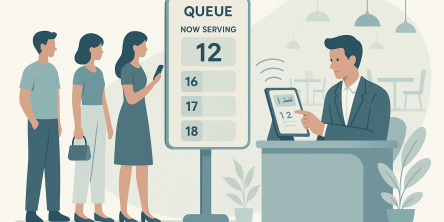Leveraging the Benefits of Cloud-Native Security Approach

Cloud-native technologies have ushered in sweeping changes to the modern development pipeline by removing the complexities of monolithic application architecture and have rendered traditional software development models obsolete. And modern businesses are rapidly migrating their operations to cloud environments and realizing the importance of robust security measures & how has never been more critical. While it offers many advantages, cloud-native technologies have also introduced new challenges like cloud-native security.
And, with the evolving threat landscape and the growing complexity of cloud infrastructures, adopting a cloud-native security approach is an indispensable strategy for safeguarding valuable assets & data. And, unlike traditional security methods, a cloud-native security approach leverages the unique capabilities of cloud platforms while creating defenses, detecting threats in real-time & responding with agility.
With this blog, I’ll explore the key advantages of a cloud-native security approach & how it empowers organizations to embrace the cloud while staying resilient against emerging cyber threats.
Cloud-Native Security - Introduction
Cloud-native security refers to various security practices and technologies developed for applications built and deployed in cloud environments. While traditional security practices often rely on network-based protections, cloud-native security is an application-focused approach that stresses identity and access management, container security, and workload security with continuous monitoring and response cycles.
With cloud-native security, security is built into the application and the infrastructure from the ground up. It is achieved using a combination of automated security controls and DevOps processes. The cloud-native security aims to safeguard and protect the system to counter the threats and vulnerabilities of the cloud environment by being compliant with the regulations and standards set out.
Going cloud-native provides a wealth of security benefits and the following highlights the key advantages of cloud-native security. This article features some of the benefits of using a cloud-native security approach.
Cloud-Native Security Approach Advantages
- Security As A Completely Managed Service: In conventional on-premises architecture, responsibility for safeguards falls on the in-house application teams and requires rigorous monitoring of applications. In the cloud-native environment, the cloud service provider manages the cloud security. Cloud providers are expected to provide protection through the entire information processing lifecycle and ensure secure deployment of services, data storage with privacy safeguards, and secure communications between services. It also offers safe and private communication with customers over the Internet and reliable operation by infrastructure administrators.
- Enhanced Visibility And Monitoring: Cloud-native security makes it possible to collect information from all components of an application and provides complete, end-to-end environment visibility. These real-time views offer critical assistance in the security-related decision-making process. Cloud-native security enables continuous testing throughout the CI/CD layers, enabling tracking and resolving security issues at both the system and component levels. Cloud-native applications allow monitoring of usage logs and make it easier to reject unauthorized user access by sending alerts signaling such attempts.
- Ease Of Compliance: The cloud-native security model is designed to protect cloud applications and data by providing better security and compliance practices. It gives end-to-end visibility for activities happening within the infrastructure. It complies with software products like Service Organization Control 2 or SOC 2 while reducing the operational burden of access management on both on-premises and the cloud-native infrastructure. A cloud-native security platform allows security management across multiple clouds and providers. By creating a single security strategy, cloud monitoring, disaster recovery & compliance efforts can be easily simplified.
- Easily deployable security architecture changes: A cloud-native Security Platform (CNSP) can help streamline workflows and identify and remove threats by incorporating ML techniques and algorithms. Rapid deployments are vital to cloud-native applications, enabling teams to apply security fixes across multiple environments. For this to happen, the infrastructure has to be updated with the latest security measures that can combat any evolving threat.
- Backup and recovery services: Cloud-native applications offer assurance of data backup; different application tiers can set up data backup as needed. Critical service applications can be backed up in real-time to ensure minimum downtime. Data backups can help companies safeguard their applications, data & other vital software against system failure, data breaches, and natural disasters.
- Data security: Cloud infrastructure adoption ensures that the data is always encrypted. Cloud-native security uses key-based encryption algorithms that provide the data is not breached or intercepted when accessed or at rest.
- Network security: Deployments in cloud-native infrastructure can be safeguarded with security controls like configurable firewall rules and monitoring continuous traffic. A log is generated for all the traffic within the network components and accesses to-from the applications.
Conclusion
Cloud-native benefits are many over traditional application design and development strategies. Cloud-native provides a more moldable and adaptable application architecture and a more efficient application development process. Cloud-native security ensures standard compliance practices and protects while giving end-to-end visibility of activities within the infrastructure. It helps achieve compliance for software products like SOC 2 and reduces the operational burden for both on-premises and cloud-native infrastructure. By leveraging the many benefits of cloud computing, cloud-native security enables protection against threats and vulnerabilities. Cloud-native security allows the development of new applications without worrying about additional security solutions.
A software company can help reap the benefits of cloud-native application development by developing reliable, secure applications optimized for the cloud in scale and performance.
Similar Articles
The modern age of customers expect constant availability, no matter what the offer. And for that, the market requires rapid innovation cycles. In such a high stakes environment, technology infrastructure is more than just a cost center.
When evidence seals fail, cases weaken. Explore how compromised chain of custody can derail investigations and jeopardize justice.
Compare hydraulic and traction residential elevators to find the best fit for your home. Learn how each system works, their pros and cons, space needs, energy use, and maintenance requirements.
Extend the lifespan of your commercial marina docks with proactive maintenance. Learn essential inspection routines, material-specific care, and safety tips to protect your investment and ensure long-term dock performance.
Learn the key factors in designing an engineered fall protection system. Discover how hierarchy of controls, task analysis, structural integrity, and fall clearance ensure safety and compliance.
Today, modern businesses face constant pressure to operate with maximum efficiency. This requires a technology infrastructure that is both agile and robust. However, the traditional model of on-premises data centers often has significant limitations. These legacy systems can drain valuable resources from teams.
When people are hungry, standing in line for a table feels tiring and unpleasant. In fact, research shows that most individuals will just walk away if they have to wait longer. They will go and find another place to eat.
In the early stages of designing new community centers, fire stations and administration buildings, city planners and architects are forced to make a crucial decision: What building material is best suited for providing the most value, safety and longevity to the public?
Amazon Simple Queue Service (SQS), Simple Notification Service (SNS), and EventBridge are just a few of the messaging services that AWS provides to meet various demands when it comes to creating scalable and effective cloud systems.









